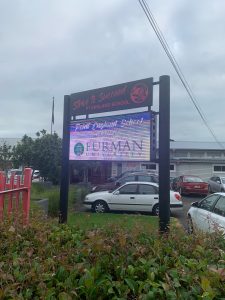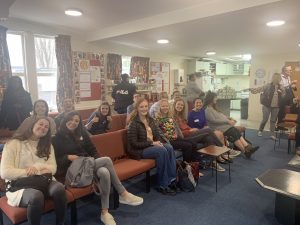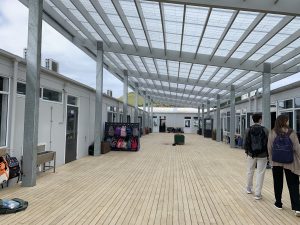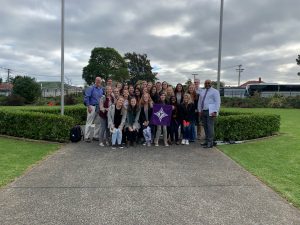Hi everyone!
Today we had a busy day visiting three different schools! We started the day off early heading to Pt England Primary School. We were welcomed by some year eight students, which are students around 13 years old, and the principal who led us to morning tea. We learned that Pt. England was a decile one primary school with about 600 students. Decile one schools are similar to our Title I schools in America, therefore receiving the most funding from the government. Year six students presented to use on the school’s use of digital technology. The school, with a small payment from the parents, provides each student with an iPad or Chrome book, depending on their age, allowing them to always have access to learning. Pt. England created Wi-Fi not only for the school, but also for the community, as many of the students do not have access to Wi-Fi at their homes. Something about this that stood out to us was that this benefitted not only students, but parents as well. They could use the children’s devices and the Wi-Fi to take online classes and further their own education. Another thing the students shared was their blogs that they kept. This allowed the students to stay connected to their teachers over the holidays, preventing them from having a learning deficit while not in school. We saw data on how the knowledge of the students that participated in these blogs was higher than those that did not. The presentation also showed us that most students came in years behind where they should be in learning, primarily in reading levels, but graduated on par with where they should be, showing the achievement that comes from the school’s hard work. Furthermore, we learned about the community aspect of the school. One part of this was that many teachers had been there for a long time. For instance, the principal had been in the community for over 30 years. They talked about how the faculty was committed to being there for a long time and therefore being able to make a large impact. An additional part of the community was that there were weekly assemblies that the school had to celebrate the successes of its community throughout the week. The motto of the school was “strive to succeed”. A major way the school tried to present this was they did not want the students to “leave themselves at the gate”. They wanted the students to bring their culture into the classroom and that way they would be the most successful.


Next, we went to Stonefields Primary School, a fairly new decile nine school with 700 students. While touring the school we quickly observed large classrooms with open areas for group work and collaboration amongst the students. Many classrooms contained a large number of students broken up into many smaller groups with around four teachers in each classroom. Coteaching was commonly used to serve the individualized needs of every student. We listened to a presentation from the principal and two students. Here we learned about the school’s learning processes and how they followed the idea of “the Pit”, when they are confused and/or uncomfortable, and how students can use the learning processes to collaborate and move out of “the Pit”. They also spoke about how they teach the students how to learn in addition to content, helping them in their later schooling and life. Also, the school included time for passion-based learning. This allowed the students to have unique leadership opportunities where they could work on projects that interested them. Recently, some of the older students designed the school’s new 24 classroom building allowing them to be involved.

Lastly, we went to Tamaki College, a decile 1 secondary school with about 625 students. Students gave us a tour and we got to see the learning in action. Similar to the earlier schools, we saw some small group work. However, on the whole we noticed that the classrooms were more the teacher teaching to the students as a whole group. Something unique about this school was that there was a mental health class along with doctors, nurses, dentists, and counselors available to the students. In the mental health class, students were taught positive thinking and how to handle their difficulties, something that is especially important when one realizes all the struggles these students face. After the tour we went to the library where the principal presented to us. We learned about graduation and what students do after secondary school.


Overall, we found it interesting comparing all the different types of schools to each other and to American schools and how there was a lot more student leadership than in the United States. After the school visits, we all had some chill time in the hotel before we went out to dinner and recharged for our next day!
